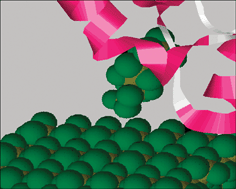The fluorous effect in biomolecular applications
Abstract
From being a niche area only a few decades ago, fluorous chemistry has gained momentum and is, nowadays, a fervent area of research. It has brought forth, in fact, numerous applicative innovations that stretch among different fields: from catalysis to separation science, from supramolecular to materials and analytical chemistry. Recently, the unique features of perfluorinated compounds have reached the attention of the biochemists' audience. This tutorial review introduces the basic concepts of fluorous chemistry and illustrates its main biomolecular applications. Special attention has been given to fluorous microarrays and their combination with Mass-


 Please wait while we load your content...
Please wait while we load your content...